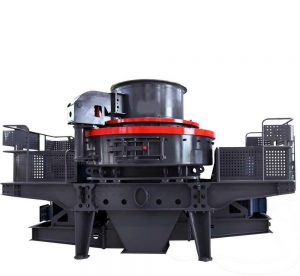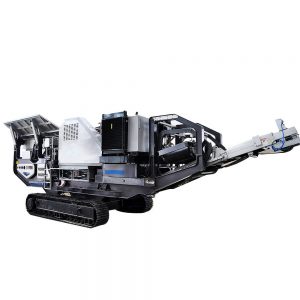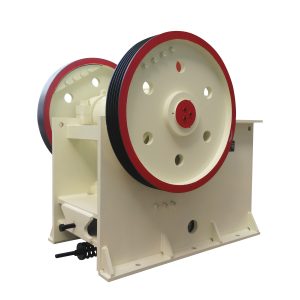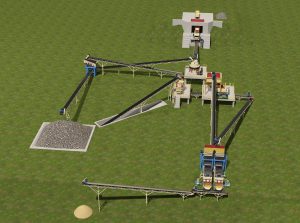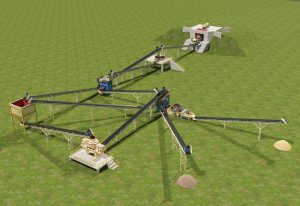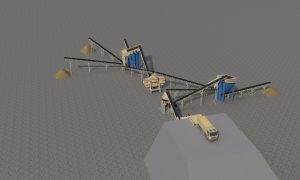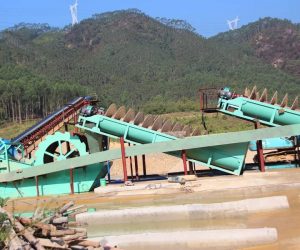Transform Mortar Waste into Construction Sand
In the construction industry, sustainability is becoming increasingly important. One effective way to contribute to environmental conservation is through the recycling of construction materials. Mortar waste is a recyclable material. This blog post will explore what mortar waste is, how to process it into construction sand, the mortar waste crushing plant equipment, and the benefits of this recycling process plant.
What is Mortar Waste?
It refers to the leftover or discarded mortar that results from construction activities. Mortar, a mixture of cement, sand, and water, is primarily used for binding bricks and stones in masonry work. Common sources of mortar waste include:
- Construction Sites: Residual mortar that is mixed but not used.
- Demolition Sites: Demolish old structures that contain mortar.
- Renovation Projects: Excess mortar during renovation work.
- Manufacturing Processes: Waste generated during the production of masonry units.
This waste can accumulate quickly and contribute to landfill issues if not properly managed. In fact, according to estimates, construction and demolition debris accounts for a significant percentage of total solid waste in many regions. Recycling mortar waste not only reduces waste but also provides a sustainable alternative for construction materials.
How Does the Mortar Waste Crushing Plant Process?
Processing mortar waste into construction sand involves several key steps. The primary goal is to crush, screen, and convert the waste into usable sand material. Here’s a step-by-step breakdown of the process:
Collection and Transport
The first step involves collecting it from construction or demolition sites. This waste goes to the crushing plant for processing. Efficient logistics and transportation are crucial in this phase to minimize costs and ensure timely processing.
Pre-Screening
Before the crushing process, the mortar waste is pre-screened to remove large debris, stones, or contaminants that may interfere with the crushing operation. This step ensures a cleaner end product. It also helps in identifying any non-recyclable materials that need to be disposed of properly.
Crushing
The pre-screened mortar waste enters a crusher. This equipment breaks down the solid mass of mortar into smaller pieces. The crushing process typically includes:
- Primary Crushing: Large chunks of mortar waste are reduced to smaller sizes using a jaw crusher. This initial stage is essential for making the material manageable for further processing.
- Secondary Crushing: Further crush the material with a cone crusher or impact crusher to achieve the desired size for sand production. These crushers ensure that the material is a consistent size, which is essential for the quality of the final product.
Screening
After crushing, screen the material to separate fine particles from larger fragments. The screening process helps in classifying the material into different grades. This step ensures that only suitable sizes are retained for sand production and that the final product meets industry specifications.
Washing (Optional)
Depending on the quality of the mortar waste, a washing process may be employed to remove impurities such as dust, dirt, or residual cement. This step is crucial for producing high-quality construction sand. A sand washer enhances the cleanliness and quality of the sand, making it more suitable for construction applications.
Stockpiling
Once the mortar waste is crushed and screened, the final product—construction sand—is stockpiled for use in various construction projects. Proper stockpiling techniques are necessary to prevent contamination and ensure that the sand remains in pristine condition until it is ready for use.
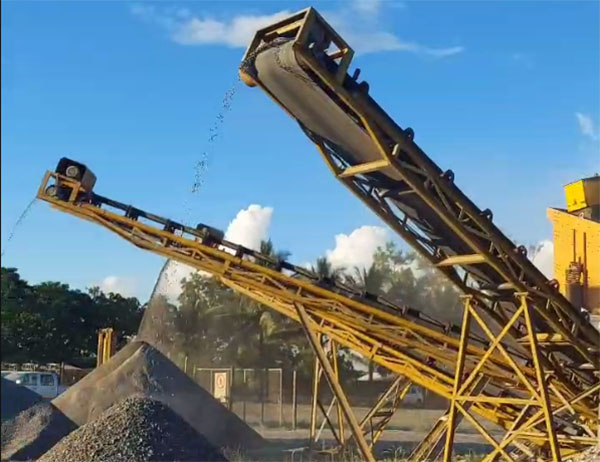
Mortar Waste Crushing Plant Equipment
Setting up a mortar waste crushing plant requires specific equipment to ensure efficient processing. Here’s a list of essential machinery and tools:
Feeding Equipment
Vibrating Feeder: This equipment feeds the raw material into the crusher evenly and continuously. It helps regulate the flow of material and ensures optimal feeding rates.
Crushing Equipment
- Jaw Crusher: Ideal for primary crushing of large mortar waste chunks. It is robust and can handle hard materials efficiently.
- Cone Crusher: Used for secondary crushing to achieve finer material sizes. Cone crushers are effective in producing a uniform particle size, which is essential for the construction of sand.
Screening Equipment
Vibrating Screen: After crushing, the vibrating screen separates the crushed material into different sizes. This equipment is essential for classifying the sand and ensuring that only the correct sizes.
Washing Equipment (if needed)
Sand Washer: Used to clean the crushed material, removing impurities and enhancing the quality of the final product.
Conveying Equipment
Belt Conveyor: Facilitates the movement of materials between different stages of the crushing process. Conveyors reduce labor costs and increase efficiency by automating the material handling process.
Storage Equipment
Stockpiling Bins: Used to store the processed construction sand before it goes to construction sites. Proper storage techniques help maintain the quality of the sand.
Control System
Automation System: To monitor and control the crushing plant’s operations, ensuring efficiency and safety. Automation can help reduce operational costs and improve overall productivity.
Benefits of Recycling Mortar Waste into Construction Sand
Recycling mortar waste has several advantages that make it an attractive option for construction companies and the environment:
Environmental Benefits
Reduces Landfill Waste: Recycling mortar waste helps divert significant amounts of debris from landfills, contributing to waste reduction efforts.
Conserve Natural Resources: By using recycled materials, the demand for virgin resources such as sand, gravel, and stone will decrease, helping to preserve natural ecosystems.
Cost-Effective
Lower Material Costs: Processed mortar waste can offer a more cost-effective alternative to purchasing new sand, resulting in substantial cost savings for construction projects.
Reduced Disposal Costs: By recycling waste materials, companies can minimize disposal fees associated with landfill use.
Quality Material
High-Quality Sand: When processed correctly, recycled mortar waste can produce high-quality sand suitable for various construction applications, including concrete production, plastering, and masonry.
Consistency: With proper screening and crushing, the recycled sand can achieve a uniform particle size, which is essential for maintaining the quality of construction materials.
Promotion of Sustainable Practices
Encourages Circular Economy: Recycling mortar waste supports the circular economy by turning waste into a valuable resource, promoting sustainable practices within the construction industry.
Regulatory Compliance: Many regions have regulations and incentives for recycling construction materials. By adopting recycling practices, companies can meet regulatory requirements and benefit from financial incentives.
Conclusion
Transforming mortar waste into construction sand is a sustainable and practical solution for the construction industry. By using the right equipment and processing techniques, companies can effectively recycle this waste material, reducing their environmental footprint while providing high-quality construction materials. As sustainability continues to be a priority in the industry, investing in a mortar waste crushing plant is a step towards a greener future.
By embracing recycling practices, the construction industry can contribute to environmental conservation while also benefiting economically. The transition to using recycled materials, such as mortar waste, not only supports the health of our planet but also paves the way for a more sustainable and responsible future.
Eastman is a professional mining equipment manufacturer with 38 years of rich experience in the mining construction industry. We can also provide lab equipment. Welcome to consult our professional team to get factory prices. According to your situation and product requirements, we will design a complete sand-crushing production line flow chart and provide an accurate quotation.
